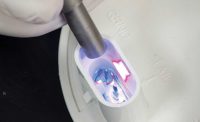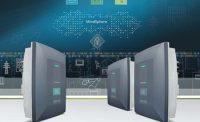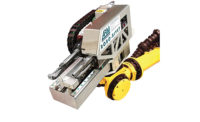Assemblers in many industries are discovering the benefits of adhesive bonding. Adhesives can join dissimilar materials, such as rubber and metal. Adhesives can create hermetic seals. They resist humidity, corrosion, vibration and fatigue. Adhesives also handle a wide range of temperatures. Some aerospace adhesives can withstand temperatures of 4 K to 400 F!
Joints assembled with adhesives distribute stress evenly over the entire bonding area. They’re also more cosmetic. There are no burn marks, as in spot welding, and there are no projections outside the joint, as with threaded fasteners or rivets. Compared with mechanical fastening or some welding techniques, the part tolerances for adhesive bonding are more forgiving.
Here are seven of the latest formulations.
Water-Based Threadlocker Can Be Preapplied
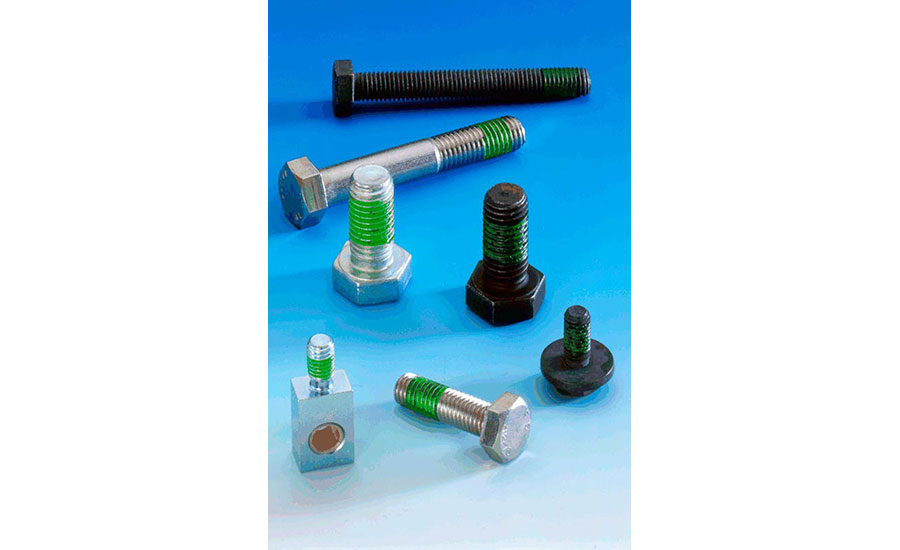
Loctite DRI 2250-W is a water-based, flowable preapplied threadlocker for medium and high-strength automotive applications.
“Unlike competitor products that use toluene and other solvents, Loctite DRI 2250-W enables high-speed throughput similar to solvents, but is water-based,” explains Rainer Schoenfeld, global market strategy director for exterior, power train, interior and chassis at Henkel. “This provides automotive OEMs and suppliers with a sustainable and more environmentally friendly choice that doesn’t compromise on performance.”
Loctite DRI 2250-W resists temperatures of over 200 C and has excellent chemical resistance. “Traditional products fail to maintain room temperature (RT) break-loose strength and can typically lose around 50 percent—and in some cases even more—of their strength at 150 C,” says Scott Simmons, business development manager for North America at Henkel. “By contrast, DRI 2250-W maintains RT strength beyond 150 C and in most cases can achieve this up to 200 C.”
Another advantage of Loctite DRI 2250-W is its low coefficient of friction. Tested on multiple plating surfaces, the material maintains a coefficient of friction between 0.1 and 0.16. It also shows superior performance on all plating types, including the newer zinc-flake coating, with added lubricity.
As a pre-applied film, the threadlocker is dry to the touch and remains an inert coating until assembly. During assembly, microcapsules contained within the coating are crushed and release an active ingredient that initiates the anaerobic curing process. When cured, the threadlocker also acts as a thread sealant. It eliminates the need to apply liquid sealants, adhesives or any other mechanical locking or sealing device to threaded parts during manual or automatic assembly. It is flow-coatable for higher output speeds.
Applications include transmissions, differentials, oil pans and seats.
See this company at The ASSEMBLY Show, Booth 1616.
Henkel Corp.
www.henkel-adhesives.com
Versatile, Electrically Conductive Epoxy
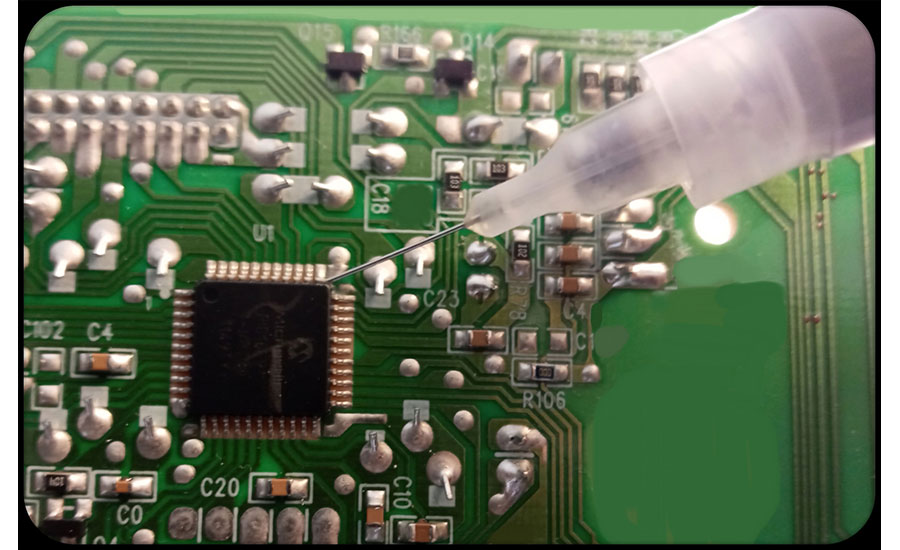
EpoxiOhm EO-20E is an electrically conductive epoxy designed for solder replacement, chip bonding and other intricate electronic and optoelectronic assemblies. This creamy paste has an easy-to-use 1-to-1 mix ratio with a 48-hour work time. Application is easily accomplished with automated syringe dispensing, screen printing, die stamping, or by hand. Cure is as fast as 1 minute at 175 C, so it can be used for high-speed production. It produces a volume resistivity of 10-4 ohm-centimeters and a thermal conductivity of 2.5 watts per meter kelvin.
The material has low ionic content and has been certified to NASA ASTM 595-7 for outgassing. It can be supplied in various kit sizes ranging from 2 ounces to 1 pound. It can also be supplied premixed and frozen in 3, 5, 10 and 30 cc syringes.
See this company at The ASSEMBLY Show, Booth 1144.
EpoxySet Inc.
https://epoxysetinc.com
Structural Adhesive Bonds Stainless Steel
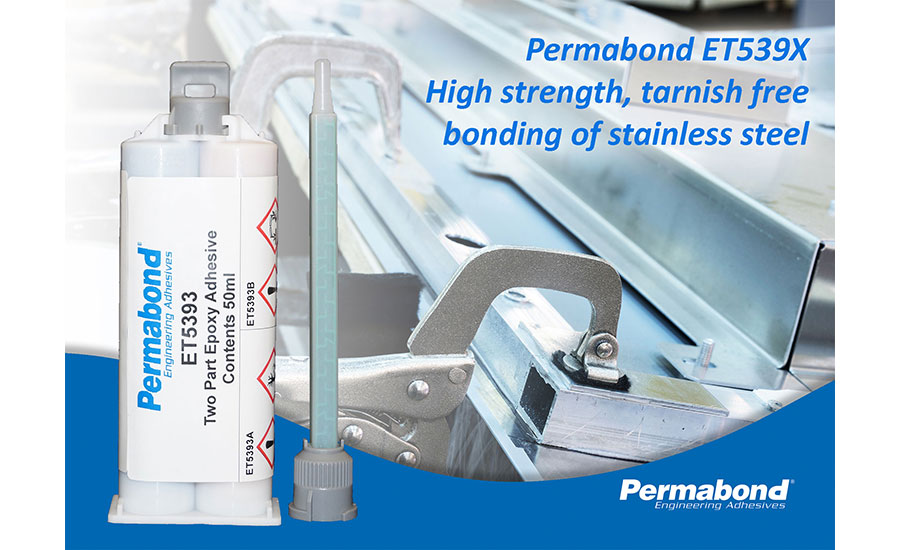
Permabond ET5390 is a general-purpose structural adhesive for bonding stainless steel, but it also adheres to other metals, composites, plastics and wood. Available in 1-to-1 dual cartridges, the adhesive mixes via static mixer nozzle and cures at room temperature.
Due to its toughened nature, the adhesive is ideal for applications where there could be high peel stress or impact forces on the joint.
Compared with welding, the adhesive provides better stress distribution through the joint; a tarnish-free surface finish; and a 100 percent seal against moisture.
The adhesive offers excellent resistance to harsh environments and is highly resistant to water, temperature extremes and chemicals. It is ideal for sealing tanks and pressure vessels or for bonding stainless steel cabinets, enclosures and machinery housing.
See this company at The ASSEMBLY Show, Booth 1448.
Permabond Engineering Adhesives
www.permabond.com
Dual-Curing Structural Adhesive for Electric Motors
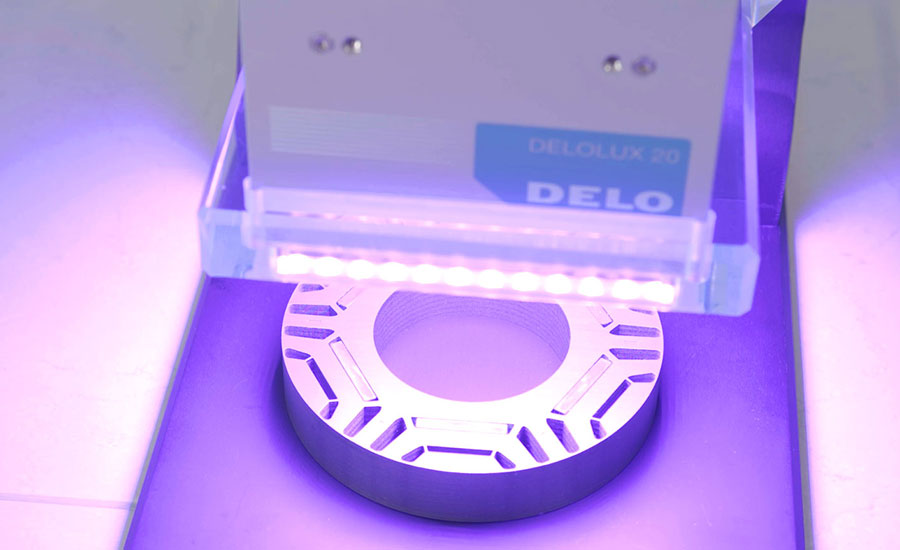
Dualbond HT2990 is a dual-curing, high-temperature adhesive for electric motor assembly applications, such as magnet bonding and magnet stacking. The adhesive achieves fixation in 5 to 10 seconds when exposed to light. This supplemental means of curing helps motor manufacturers quicken assembly processes and optimize efficiency.
While heat is the standard method of curing adhesives for magnet bonding, complementing it with light fixation creates an already-cured outer layer that helps keep everything in place. The adhesive does not seep outside or onto the motor laminations. In magnet stacking, supplementing heat curing with light fixation lets manufacturers forego having to keep magnets under a jig in the oven to reach the desired bond line thickness.
Final curing with heat takes 30 minutes at 150 C or 60 minutes at 130 C. If exposure to heat occurs later in electric motor assembly, for example via heat shrinkage, there is a possibility for the heat curing step to be skipped. Induction curing can be another alternative to oven curing as well.
At room temperature, the adhesive can achieve a compression shear strength of up to 70 megapascals (MPa) on steel. This compares to 45 MPa for standard high-performance heat-curing epoxies. It also has a high glass transition temperature of 165 C. In heat as extreme as 180 C, it still exhibits a tensile shear strength of 7 MPa on aluminum. This is equivalent to 70 kilograms per square centimeter of force.
See this company at The ASSEMBLY Show, Booth 1811.
DELO Industrial Adhesives LLC
www.delo-adhesives.com
UV-Cured Silicone Gel Protects Electronic Assemblies
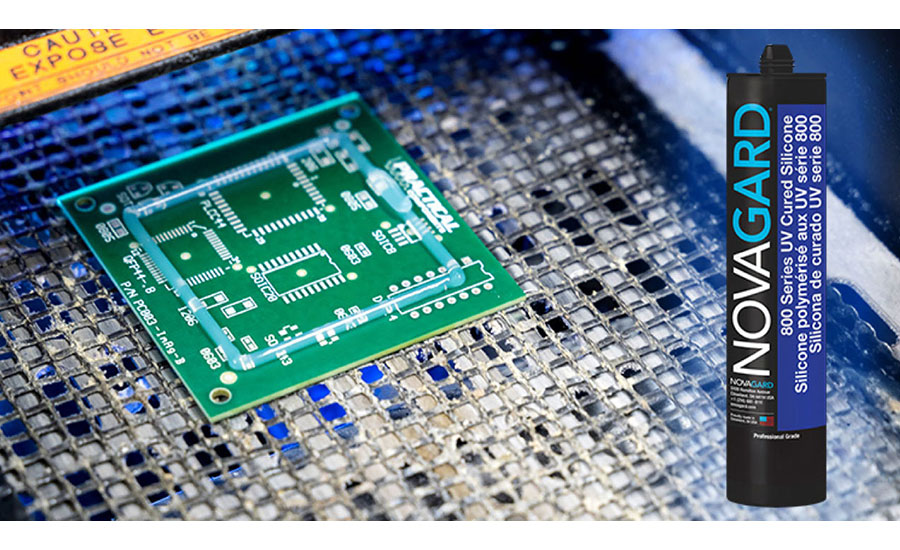
With a durometer (Shore 000) of only 20, 800-755 UV-cure gel is soft and flexible. This easy-to-apply, self-leveling and self-healing gel cures in seconds upon exposure to UV light to a depth of 14 millimeters in a single pass. The gel has been formulated for potting or encapsulating applications to protect electrical and electronic assemblies from harsh environments.
“An example might be an electrical splice connector box where the wires can be inserted into the gel,” says Gregory Peck, Novagard sales manager for electronics, EV and silicone solutions. “The gel would then coalesce around the wires, completely protecting them from moisture. Another benefit of the 800-755 gel is that you can return a year later to remove the wires, make any adjustments, and reinsert them without incident.”
With a viscosity of 55,000 centipoise, it flows predictably during application. The noncorrosive, single-component material provides excellent insulation properties, vibration damping, and barrier protection against weather and severe environmental conditions. It will remain soft and pliable in temperatures ranging from -40 to 200 C.
See this company at The ASSEMBLY Show, Booth 1816.
Novagard
https://novagard.com
Wash-Off Label Adhesive Promotes Recycling of Plastics
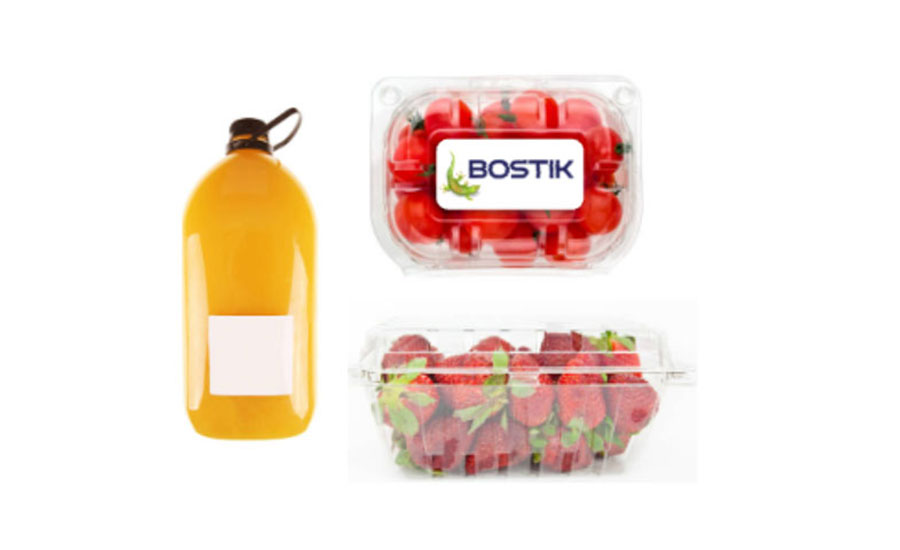
Flexcryl ClearCycle 1000 is a temperature-resistant, water-based acrylic label adhesive that can be washed off of plastic bottles so they can be recycled more easily. The adhesive meets the Association of Plastic Recyclers Critical Guidance Criteria for recycling PET bottles.
The Flexcryl family of emulsion acrylic adhesives is typically used in label applications. ClearCycle 1000 was formulated to adhere to PET, which is increasingly popular for bottle manufacturing. With ClearCycle 1000, converters can now use wash-off labels for cold-fill or freezer-grade applications that require adhesion at temperatures of 40 F or lower. Surface pretreatment is not required for the adhesive to adhere to biaxially oriented polypropylene label face stock.
See this company at The ASSEMBLY Show, Booth 341.
Bostik Inc.
www.bostik.com
Hybrid Light-Curable Adhesive for Medical Devices
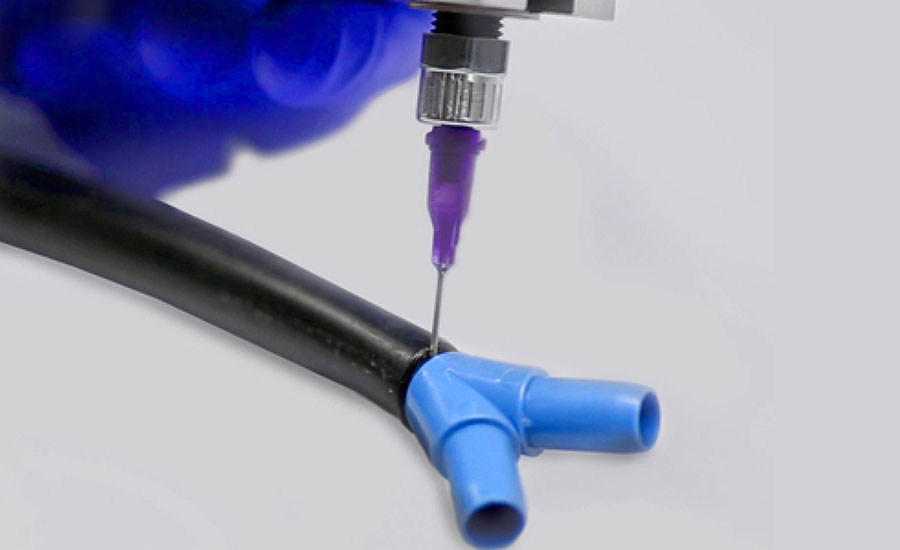
HLC-M-1000 is the first product in a new series of hybrid light-curable (HLC) cyanoacrylate adhesives that combine the best qualities of anionic and free-radical chemistries into one formulation. These adhesives exhibit the physical and performance properties of light-curable adhesives and the rapid moisture and contact curing properties of anionics. The incorporation of contact curing provides instant bonding in dark areas and enables the adhesive to bond opaque and light-blocking materials.
The primary advantages of HLC adhesives include fast curing under low intensity light; little or no blooming with proper light cure; better aesthetics; humidity resistance (even without light); and more flexible bond joints than other cyanoacrylates. Substrates do not need to be translucent, and exposure to light curing increases bond integrity while reducing blooming in exposed areas.
HLC adhesives require no primers. Other potential advantages of HLC adhesives include less heat generation during cure; high gap-filling properties; and reduced stress cracking. The materials also exhibit little or no surface tack and are safer to use.
The first product in the series, HLC-M-1000, is designed for medical device assembly. The adhesive meets various biocompatibility standards and is well-suited for bonding applications on catheters, tube sets, diagnostic and therapeutic devices, autoinjectors, and endoscopes.
HLC-M-1000 cures rapidly with broad-spectrum light and is LED optimized at a wavelength of 405 nanometers. It can also cure at a very low intensity (approximately 20 milliwatts per square centimeter). The material begins to cure instantly upon substrate contact, with the ability to expedite and improve the cure with light exposure. Other desirable characteristics include a tack-free surface after light cure; a 3 centipoise, wicking-grade viscosity for tight-fitting assemblies; and compatibility with many plastics and metals.
Dymax Corp.
https://dymax.com
ASSEMBLY ONLINE
For more information on adhesives, read these articles:
The Lighter Side of Automotive Assembly
Increasing Strength and Reliability of Interference Fits
Best Practices for UV-Cure Adhesives


